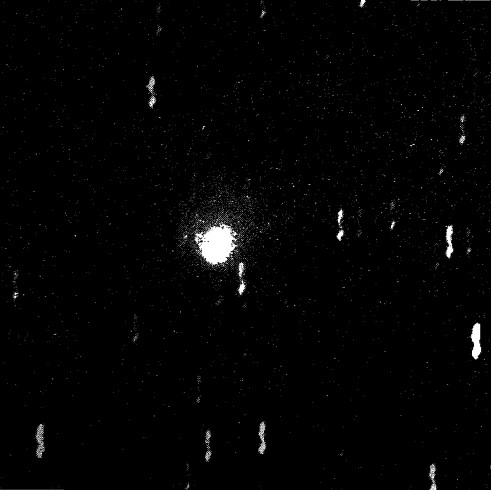10P/Tempel on:
[Wikipedia]
[Google]
[Amazon]
10P/Tempel, also known as Tempel 2, is a periodic Jupiter-family  During the 2010 apparition the comet brightened to about
During the 2010 apparition the comet brightened to about
Orbital simulation
from JPL (Java)
Horizons Ephemeris
Elements and Ephemeris for 10P/Tempel
– Minor Planet Center
10P/Tempel 2
– Seiichi Yoshida @ aerith.net
(astrosurf) Periodic comets 0010 Comets in 2015 20210324 18730704 {{comet-stub
comet
A comet is an icy, small Solar System body that, when passing close to the Sun, warms and begins to release gases, a process that is called outgassing. This produces a visible atmosphere or coma, and sometimes also a tail. These phenomena ...
with a 5 year orbital period. It was discovered on July 4, 1873 by Wilhelm Tempel
Ernst Wilhelm Leberecht Tempel (4 December 1821 – 16 March 1889), normally known as Wilhelm Tempel, was a German astronomer who worked in Marseille until the outbreak of the Franco-Prussian War in 1870, then later moved to Italy.
Tempel was ...
. The next perihelion
An apsis (; ) is the farthest or nearest point in the orbit of a planetary body about its primary body. For example, the apsides of the Earth are called the aphelion and perihelion.
General description
There are two apsides in any elli ...
passage is 24 March 2021 when the comet will have a solar elongation of 30 degrees at approximately apparent magnitude
Apparent magnitude () is a measure of the brightness of a star or other astronomical object observed from Earth. An object's apparent magnitude depends on its intrinsic luminosity, its distance from Earth, and any extinction of the object's ...
11. Closest approach to Earth during the 2021 passage did not occur until many months later on 3 November 2021 at a distance of .
The comet nucleus
The nucleus is the solid, central part of a comet, once termed a ''dirty snowball'' or an ''icy dirtball''. A cometary nucleus is composed of rock, dust, and frozen gases. When heated by the Sun, the gases sublime and produce an atmosphere ...
is estimated to be roughly the size of Halley's Comet
Halley's Comet or Comet Halley, officially designated 1P/Halley, is a short-period comet visible from Earth every 75–79 years. Halley is the only known short-period comet that is regularly visible to the naked eye from Earth, and thus the on ...
at 10.6 kilometers in diameter with a low albedo
Albedo (; ) is the measure of the diffuse reflection of solar radiation out of the total solar radiation and measured on a scale from 0, corresponding to a black body that absorbs all incident radiation, to 1, corresponding to a body that refl ...
of 0.022. The nucleus is dark because hydrocarbon
In organic chemistry, a hydrocarbon is an organic compound consisting entirely of hydrogen and carbon. Hydrocarbons are examples of group 14 hydrides. Hydrocarbons are generally colourless and hydrophobic, and their odors are usually weak or ...
s on the surface have been converted to a dark, tar like substance by solar ultraviolet
Ultraviolet (UV) is a form of electromagnetic radiation with wavelength from 10 nm (with a corresponding frequency around 30 PHz) to 400 nm (750 THz), shorter than that of visible light, but longer than X-rays. UV radiation ...
radiation. The nucleus is large enough that even near aphelion
An apsis (; ) is the farthest or nearest point in the orbit of a planetary body about its primary body. For example, the apsides of the Earth are called the aphelion and perihelion.
General description
There are two apsides in any ell ...
(furthest distance from the Sun which is near the orbit of Jupiter
Jupiter is the fifth planet from the Sun and the largest in the Solar System. It is a gas giant with a mass more than two and a half times that of all the other planets in the Solar System combined, but slightly less than one-thousandth t ...
) the comet remains brighter than about magnitude 21.
 During the 2010 apparition the comet brightened to about
During the 2010 apparition the comet brightened to about apparent magnitude
Apparent magnitude () is a measure of the brightness of a star or other astronomical object observed from Earth. An object's apparent magnitude depends on its intrinsic luminosity, its distance from Earth, and any extinction of the object's ...
8. The most favorable apparition of 10P/Tempel 2 was in 1925 when it came within of Earth with an apparent magnitude
Apparent magnitude () is a measure of the brightness of a star or other astronomical object observed from Earth. An object's apparent magnitude depends on its intrinsic luminosity, its distance from Earth, and any extinction of the object's ...
of 6.5. On August 3, 2026, comet Tempel 2 will have another close pass within about of Earth.
Proposed exploration
TheJet Propulsion Laboratory
The Jet Propulsion Laboratory (JPL) is a federally funded research and development center and NASA field center in the City of La Cañada Flintridge, California, United States.
Founded in the 1930s by Caltech researchers, JPL is owned by NASA an ...
proposed a flyby of the comet with a flight spare of Mariner 4
Mariner 4 (together with Mariner 3 known as Mariner-Mars 1964) was the fourth in a series of spacecraft intended for planetary exploration in a flyby mode. It was designed to conduct closeup scientific observations of Mars and to transmit the ...
. The probe was instead used for a venus flyby as Mariner 5
Mariner 5 (Mariner Venus 1967) was a spacecraft of the Mariner program that carried a complement of experiments to probe Venus' atmosphere by radio occultation, measure the hydrogen Lyman-alpha (hard ultraviolet) spectrum, and sample the sola ...
.
References
External links
Orbital simulation
from JPL (Java)
Horizons Ephemeris
Elements and Ephemeris for 10P/Tempel
– Minor Planet Center
10P/Tempel 2
– Seiichi Yoshida @ aerith.net
(astrosurf) Periodic comets 0010 Comets in 2015 20210324 18730704 {{comet-stub